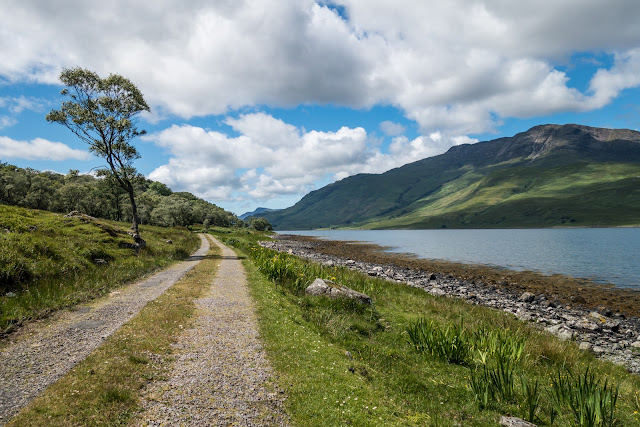Crackington Haven
On leaving Bude we drove to Crackington Haven, the nearest bay to our holiday home. Apparently, many surfers tend to prefer the less popular beach of Crackington Haven and yes, they were there as well. And, no, I didn't get a photo!
Not a surfer, but Rosey checking her camera! In the background is Cornwall's highest cliff at 735 feet. There is Geocache at the top but my legs went weak at the thought!
More rock pools and colourful rock patterns.
Some more history: 'Crackington' is a hybrid of Cornish and English 'Crack' means sandstone in Cornish and 'mutha tun' means river mouth farm in English. Located on part of the 600 mile South West Coast Path, Crackington is situated at the mouth of the picturesque valley which leads to Mineshop. It is of great geological importance with its carvoniferous rocks, which has even been given the name 'the Crackington Formation', for this reason the area has been designated a Site of Special Scientific Interest (SSSI), as well as an Area of Outstanding Natural Beauty.
Crackington Haven was mainly used for the Quarrying of Slate. Large vessels would come in and beach themselves at mid tide, unload their cargo of limestone & coal, load up with slate taken from the cliffs and on the next high tide they would sail away. In the 19th Century plans were drawn up to build a harbour at Crackington, luckily these plans were abandoned leaving its unspoilt beauty relatively unchanged for centuries.
Wrecks are said to have supplied much of the early building materials in Crackington. The rocky headlands claimed many boats all along the coast. If you walk around the rocks from Crackington Haven Beach off to the left, you may stumble across the last remaining parts of the WW2 S89 German E boat which broke tow whilst en route to Wales and washed up on Tremoutha Haven Beach on 5th October 1946. The engines are still visible and low tide for about three hours per day, please be careful not to get cut off by the tide.
Crackington, along with Boscastle, suffered a great deal of damage in the flood of 16th August 2004. Shops, cafes and homes were flooded, cars washed out to sea, and the bridge suffered structural damage which has since been repaired. Crackington has never seen anything like it before. Seeing the peaceful village now, it is hard to believe that anything ever happened! The Cabin Cafe has a photo album showing the damage that occurred on that day, it is well worth a look.
Just `round the corner` from Crackington Haven is the church of St Gennys, which is named after Saint Genesius. The church is built into a hillside, or so it seems! Note the sloping graveyard.
... and is this the Priest's door? The door itself is very new.
The cult of Genesius spread quickly from Arles into other parts of the empire, including Rome, where a titular church was built. It was then assumed that he was a Roman martyr: hence "Genesius of Rome". Later on, even more confusion helped to create an entirely fictional legend, in which he was a comedian who had converted to Christianity half-way through performing an anti-Christian satire, and was then beheaded. This latter story began in the 6th century at the latest.
Having wondered who this Saint was, I checked with Wikipedia and found this:
Genesius (Gennys) died as a martyr c. 303 AD. He is mentioned in several sources as having been martyred under the persecutions of Maximian and Diocletian. Genesius was a legal clerk, and on one occasion was so upset by the edict of persecution that he heard that he left his position. He went in search of baptism, but was not trusted by the bishop he found, who instead advised him that martyrdom was at least as good in the eyes of God. Genesius was eventually beheaded.
The things you learn!! Now an obscure hamlet in North Cornwall has a church dedicated to him. Few churches in Cornwall can rival St. Gennys for its setting. Tucked under the lee of the cliff, and thus protected from the Atlantic gales, the church and its sloping graveyard command one of the finest views in North Cornwall, over Bude Bay and up the Bristol Channel to where Lundy Island can be seen.
Well, here is the view, but I could not see Lundy.










Comments